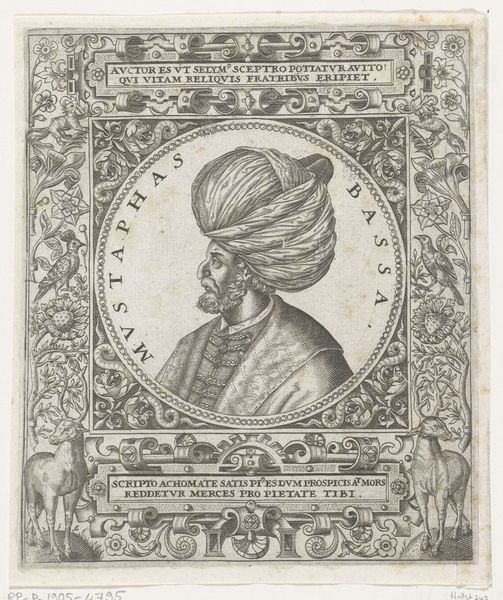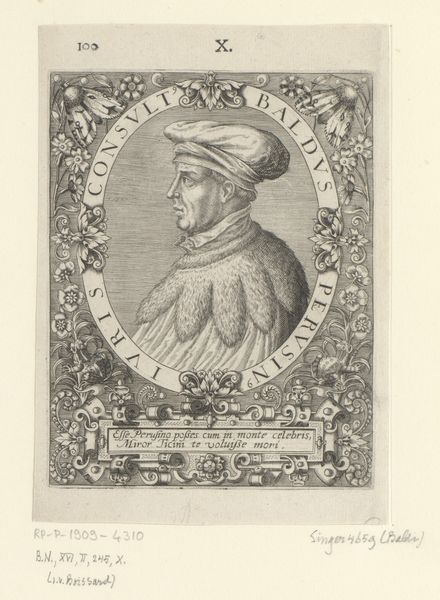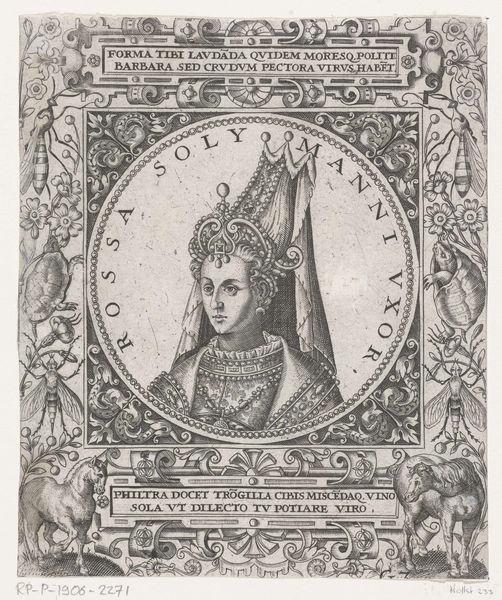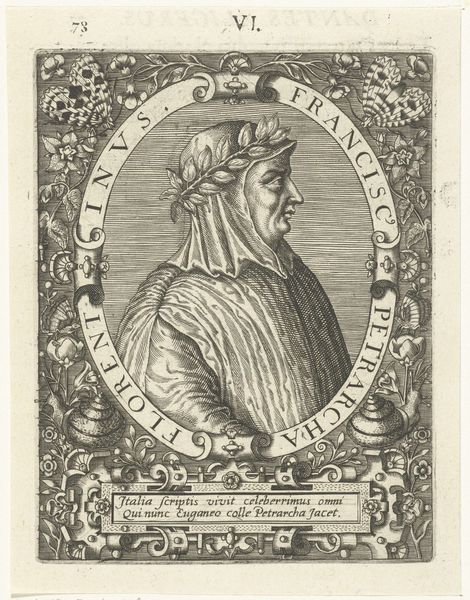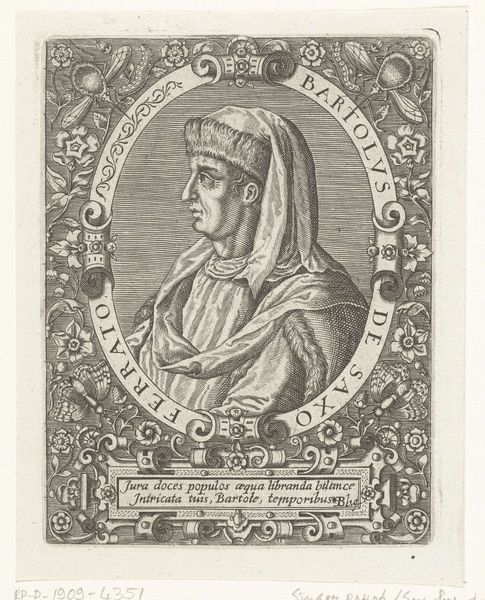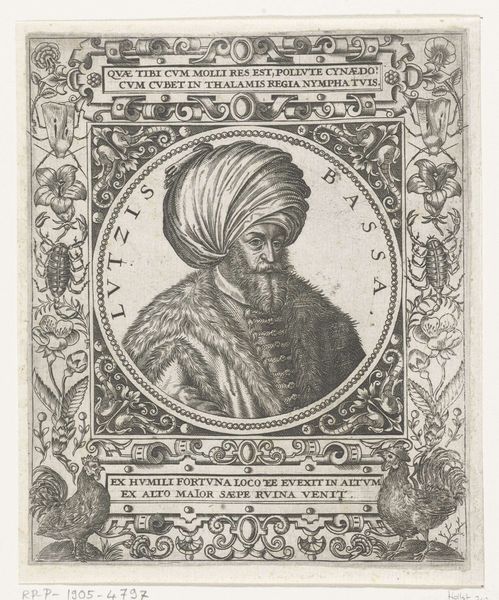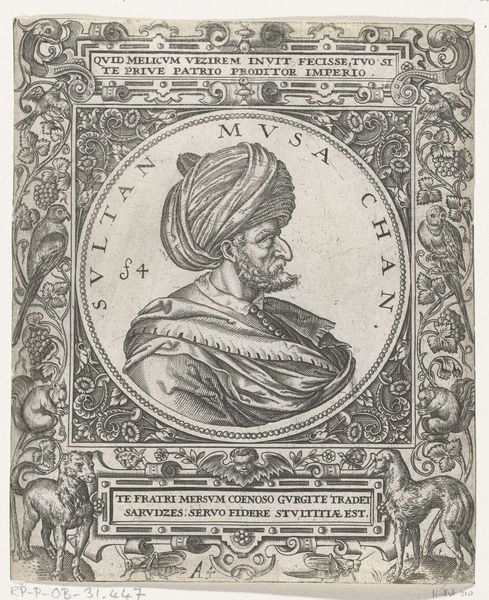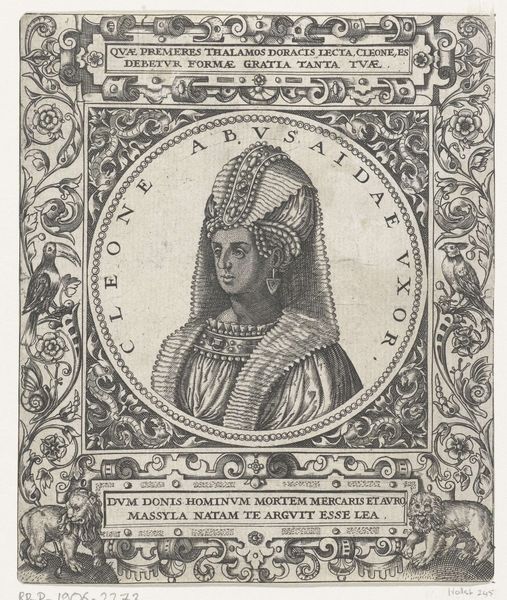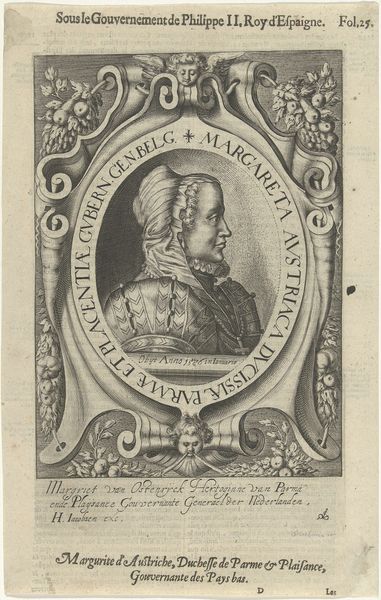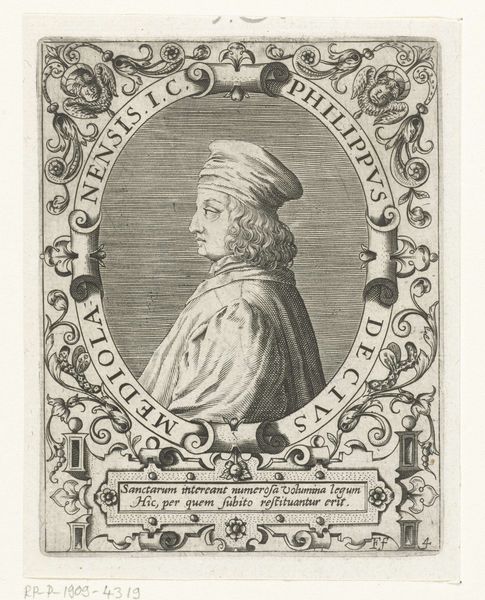
print, intaglio, engraving
#
portrait
# print
#
intaglio
#
figuration
#
11_renaissance
#
islamic-art
#
engraving
Dimensions: height 153 mm, width 128 mm
Copyright: Rijks Museum: Open Domain
Editor: Here we have Theodor de Bry's "Portret van de sultan Dorax Abusaidas Alarbaeus," created in 1596, an intaglio print currently residing in the Rijksmuseum. It’s fascinating, like a formal document but also fantastical. What do you see in it? Curator: From a materialist perspective, I see the process of image-making intrinsically tied to the social context. De Bry’s print is not just an aesthetic object; it’s a commodity produced for consumption. How does the act of engraving, this repeatable process, impact our understanding of Sultan Dorax? Was this image designed for trade or propaganda? Consider the labor involved in the meticulous creation of the plate, the distribution of the prints, and their consumption. Editor: That's interesting. I was focusing more on the Sultan himself, but the print medium really shifts the focus to its reach, its function. Did many people have access to images like this? Curator: Exactly! And what was the original source material? Was de Bry working from direct observation, or reproducing someone else's representation? The material choices here—intaglio, print—were deliberately employed to mass produce images. The question becomes: Who controlled that production and for what purpose? Look at the ornate border; consider that that’s *part* of the manufactured object, intended to enhance its appeal to a European audience. What expectations about the Sultan does the artistry reinforce, or challenge? Editor: I see, so by looking closely at the materials and the process of creating the image, we can start to understand how this image of Sultan Dorax might have been used to shape public opinion and perhaps even to advance trade or political goals. Thank you, this changes my perspective! Curator: Precisely. And hopefully that gives us some perspective to understand that these images serve to create the context of labor, materiality, and consumption to affect society and the economics of society.
Comments
No comments
Be the first to comment and join the conversation on the ultimate creative platform.
